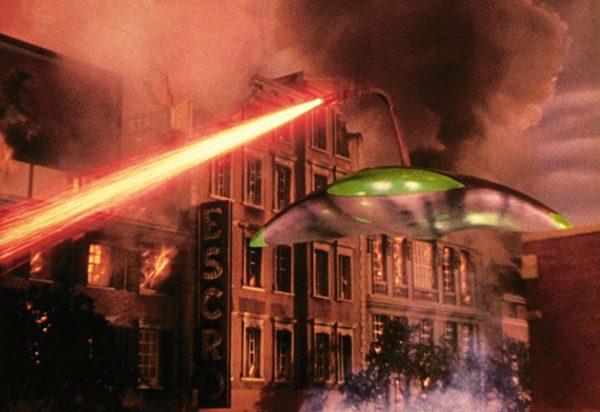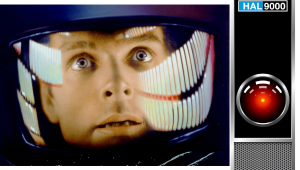The Martians Are Coming

Both that 1938 broadcast and the 1953 film insured that alien invasions from outer space would become a staple of sci-fi films. Since then the Earth has been attacked from beyond dozens of times in movies, television shows, and even in a 1978 progressive rock album from Jeff Wayne. The results, depending on individual tastes, have ranged from stunning to silly.
But no serious film fan today can deny that the 1953 War of the Worlds is a cult classic. It updates the story from Wells’ Victorian England to mid 20th century California, inevitably altering much of the book’s plot along the way. I currently own two DVD versions. The one to have is the “Special Collector’s Edition,” which includes two commentary tracks, a “Making of” documentary, a theatrical trailer, and the full audio of that 1938 radio broadcast. It’s pricey (over $40 on Amazon as I write this). But the movie alone is also available for streaming from (Amazon) Prime Video and other sources. According to the IMDB website, some of these streaming versions were derived from a new 4K transfer with updated audio. Note to Paramount (or whomever now owns the rights); how about a 4K HDR release. I wouldn’t even object to digitally erasing the wires that are sometimes visible suspending the Martian machines, though purists might!
I’ve only experienced the DVD. Even if the film were available on Blu-ray (and it’s never been released in that format) the original photography, while perfectly fine, will never make you forget Lawrence of Arabia. Framed in a 1.66:1 aspect ratio, the images are sometimes a bit cramped. It’s a shame they didn’t profit from the then imminent widescreen revolution. If the film had been shot as littler as a year later, it might have (the first CinemaScope release, The Robe was released late in 1953). The War of the Worlds was, however, shot on 3-strip Technicolor and therefore didn’t suffer the color degradation over years in storage that afflicted so many films from later in the decade when new, cheaper, but less durable color processes such as Eastman Color became prevalent.
Despite the film’s 1953 technical limitations I was never put off by its picture quality. Even when projected onto my 87-inch (diagonal) projection screen it was always pleasingly crisp, even as upscaled from DVD’s 480i standard definition. The suspension wires mentioned above were clearly visible in some shots. The sound, while a bit more problematic, was tolerable 2.0 stereo on the special edition. The specs on the disc call it 2.0 surround, but I’d like to know how you can get genuine surrounds from 2 front channels!
Forty-three years later Steven Spielberg directed a 2005 remake. The setting was different and the plot more complex, but the basic story was the same. The reviews were mixed, to say the least, but I’m also a fan of this far more technically impressive version. Even so, however, there’s nothing in Spielberg’s take as iconic, to me, as my first viewing (granted with an 11-year old’s sensibilities) of the original’s ships and heat rays, or the tantalizing if brief glimpses of the all too convincing chicken wire and paper mache alien! Perhaps even Spielberg might feel the same way. The 1953 version’s special effects might appear quaint to today’s eyes, familiar as we are to seeing CGI used today even non-action films. But when we know that virtually anything can be put on film, nothing is then truly amazing. We never ask how they did it, and there’s a certain sadness to thata loss of innocent wonder in the way we see things.
Alien invasions continue to spawn end-of-the world-as-we-know-it films. Like it or hate it, Independence Day (at least the first one) had its moments, though that computer virus certainly wasn’t one of them! It was also inspired by Wells’ story, though vastly different in the details. Mars Attacks!was just weird, though often hilarious as driven by the loopy vision of director Tim Burton. Battleship was an odd duck, though I admit to a bit of admiration for its creators’ envisioning alien machines that must have weighed hundreds of tons being transported across interstellar space just to invade our little planet. And I might be the only fan on Earth of Battle Los Angeles.
The home of the aliens in the most recent of these films isn’t specified, but even the most science-ignorant filmmakers must realize by now that Mars is an unlikely candidate!





























































